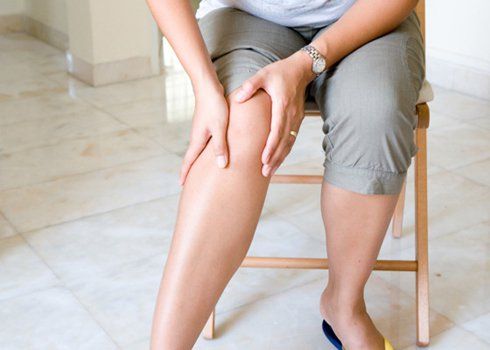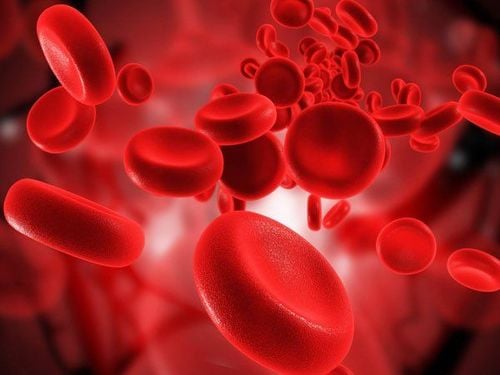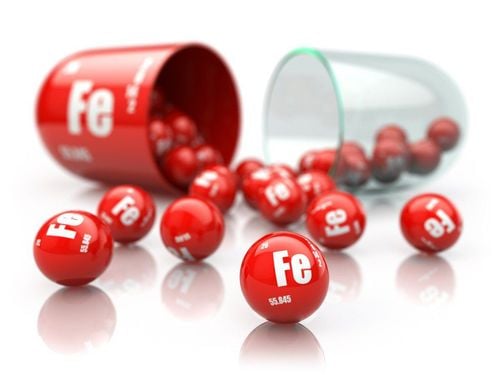This is an automatically translated article.
Having cold hands and feet even when not in a cold environment is quite common. While uncomfortable, it's usually not a cause for concern as it may just be the natural way of maintaining body temperature. However, if the condition recurs continuously and is accompanied by a change in the color of the skin, it may be due to a problem with nerves and blood circulation. So what is the cause of cold feet and hands and what to do to limit?
1. Cold feet and hands
Humans are endothermic animals, which means that each of us body temperature is always regulated at a constant temperature. When the outdoor temperature drops, the body makes sure to keep the blood circulating to all the vital organs to stay warm. This can reduce blood flow to the extremities that make you feel cold. This is completely normal and the blood vessels in the arms and legs begin to constrict to prevent heat loss.
Some people may have naturally colder feet and hands without implying any medical condition. In this case, the only thing to do is to keep them warm to protect them. However, if your feet and hands are consistently cold, even uncomfortable, or are accompanied by symptoms such as a change in finger color, it could be a sign of a medical condition. logic of the body.
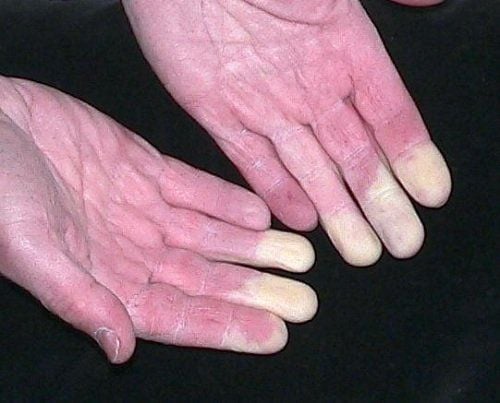
Bàn tay lạnh có thể là dấu hiệu của một số bệnh lý
People who live or work in cold environments such as freezers, military personnel, climbers, servicemen or lifeguards need special protective clothing and gloves to can keep the body warm. Cold environments can lead to frostbite and permanent damage to hands and feet. An ongoing study by the Canadian Center for Occupational Safety and Health (CCOHS) looks at whether working in a constantly cold environment helps the body adapt to it and avoid cold injury. , for example, fishermen who fish in cold regions can work with their bare hands in extreme cold conditions. The CCOHS also notes that women are more at risk of cold injury because their hands and feet lose heat more easily than men.
Trắc nghiệm: Bạn có hiểu đúng về huyết áp cao không?
Huyết áp cao còn được gọi là kẻ giết người thầm lặng vì bệnh thường không có triệu chứng. Thiếu hụt kiến thức về huyết áp cao có thể làm cho tình trạng bệnh trở nên trầm trọng hơn. Dưới đây là những câu hỏi trắc nghiệm vui giúp bạn hiểu đúng về bệnh cao huyết áp.2. Causes, what to do to limit?
2.1. Causes of cold feet and hands
Many factors can cause feet and hands to become excessively cold including the body's own adjustments in response to cold temperatures. Common health problems that can cause cold feet and hands are related to poor blood circulation or damage to the nerves in the extremities. Here are some common causes of cold feet and hands:
Anemia: Anemia is a decrease in the amount of healthy red blood cells in the blood. The main cause of anemia is iron deficiency. With an iron deficiency, red blood cells are not supplied with enough hemoglobin to carry oxygen from the lungs to the rest of the body. As a result, the patient's hands and feet become cold. A blood test is the most accurate method of determining anemia. Eating more iron-rich foods like green leafy vegetables and taking iron supplements directly can help reduce the risk of anemia as well as limit cold feet and hands.
Arterial disease: When the arteries in the body are narrowed or dysfunctional, the blood flow to the patient's feet and hands is reduced, leading to cold feet and hands. Peripheral artery disease (PAD) affects more than one-third of people over the age of 50 with diabetes. PAD often damages the artery walls of the lower extremities when plaque builds up in the vessel walls causing them to narrow. In addition, primary pulmonary hypertension can also cause pulmonary artery damage. Symptoms of cold feet can include: pain in the legs with exercise, numbness in the limbs, and sores in the feet or hands. While the symptoms of primary pulmonary hypertension include: shortness of breath, fatigue, dizziness.
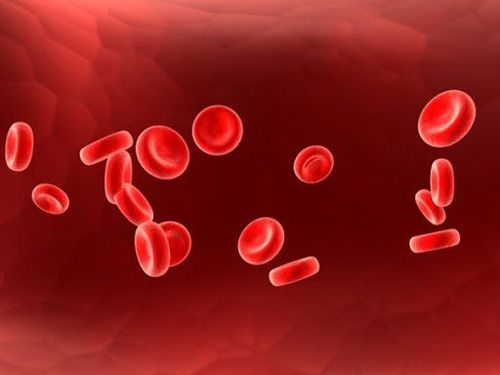
Thiếu máu thiếu sắt có thể là nguyên nhân gây đôi bàn tay lạnh
Diabetes: Poor circulation is a typical symptom in people with diabetes, especially if this happens in the hands and feet, which can cause cold hands and feet. Heart disease: Like diabetes, heart disease can reduce blood flow to the extremities, leading to cold hands and feet. Nerve damage: Nerve damage (peripheral neuropathy), especially to the nerves in the feet or hands, is one of the complications of diabetes, caused by high blood sugar levels. blood is too high for a long time. One of the early symptoms of nerve damage is a sharp, stabbing sensation in the limb. Hypothyroidism: Contrary to hyperthyroidism, hypothyroidism is a condition in which the thyroid gland is underactive and does not produce enough hormones to keep certain organs in the body working properly. Women, especially those over 60, are more likely to have hypothyroidism than men. Cold hands and feet is one of the symptoms of hypothyroidism. In addition, other symptoms also include fatigue, joint pain, dry skin, hair loss and depression.... Raynaud's syndrome: Raynaud's syndrome, also known as foot and hand foot pain, is a condition in the fingers. , toes or even other body parts feel cold or numb. It is the result of narrowing of the arteries, especially in the arms and legs, preventing blood from flowing normally. Raynaud's can cause the fingers to turn white, gray, or red. When blood circulation returns to normal, the hand may feel tingling, throbbing, or swollen. Vitamin B12 Deficiency: A vitamin B12 deficiency can lead to a number of neurological symptoms including a cold sensation in the hands or feet. Vitamin B12 is abundant in natural food sources such as meat and dairy products. They work to maintain the health of red blood cells. Other symptoms of vitamin B12 deficiency include: fatigue, anemia, pale skin, lack of vitality, feeling short of breath, mouth ulcers, cognitive disturbances... Smoking: Cigarette smoke can cause serious health problems. The body's blood vessels are damaged, the vessel walls are narrowed and contribute to more serious cold feet and hands. Over time, damaged blood vessels can make it difficult for the heart to pump blood to the rest of the body, especially distant parts like toes or fingers.

Hút thuốc lá làm tăng nguy cơ tình trạng chân, tay lạnh
In addition to the above, several other factors can also lead to cold hands and feet including:
Bacterial infections, viruses and fever Prolonged stress A 2016 study found found a strong association between chronic indigestion and cold hands and feet. Certain health problems such as high blood pressure and menstrual cramps (in women) can also lead to cold feet and hands. Children lose heat faster in cold weather because their body surface area is much larger than their weight, and the subcutaneous fat layer does not provide insulation. Elderly people lose the ability to regulate body temperature. Blood vessels especially at the ends of the extremities have a harder time constricting in cold weather leading to heat loss.

Một trong những nguyên nhân gây chứng bàn chân, bàn tay lạnh là đau bụng kinh
2.2. Limit cold feet and hands
In general, cold feet and hands usually do not have a big impact on health. In cold conditions, however, it is important to keep feet and hands warm. Here are some measures to help you keep your feet and hands warm in cold weather:
Choose clothes: Wear hats, gloves, socks, and warm clothes in cold weather. Limit tight clothing For children, it is important to teach them how to wear warm clothes, gloves and socks when they feel cold Exercise daily: Daily exercise can improve circulation blood, in addition, this is also a quick and effective way to warm the body. Stay warm while you sleep: Use a heating bag. For those who are often cold feet, hands should wear socks and gloves even while sleeping. Hand and foot massage can increase blood circulation, helping you feel warmer.
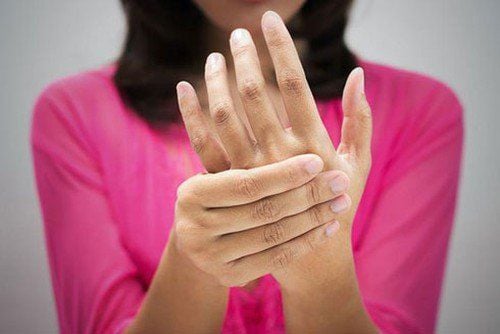
Mát xa tay, chân giúp hạn chế được tình trạng bàn chân, bàn tay lạnh
Usually, cold feet and hands are caused by the body's mobilization of blood to warm vital organs such as the heart or brain when cold weather prevents organs such as hands or feet from receiving the necessary amount of blood. to warm. However, if you experience cold feet and hands regardless of the weather and surrounding temperature and are accompanied by other symptoms such as toes, fingers that change color or difficulty breathing, it could be It could be a sign of another disease in the body. In this case, you need to go to medical facilities for timely examination, diagnosis and treatment.
Vinmec International General Hospital is the address for examination, treatment and prevention of diseases. When performing the examination process at Vinmec, customers will be welcomed and used modern facilities and equipment along with perfect medical services under the guidance and advice of experts. Good doctors, well-trained both at home and abroad.
Please dial HOTLINE for more information or register for an appointment HERE. Download MyVinmec app to make appointments faster and to manage your bookings easily.
References: healthline.com, hunimed.eu





